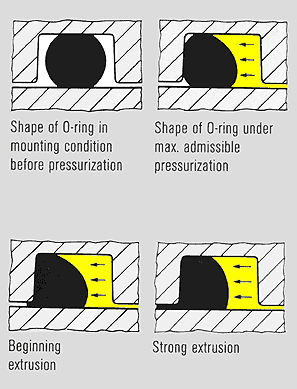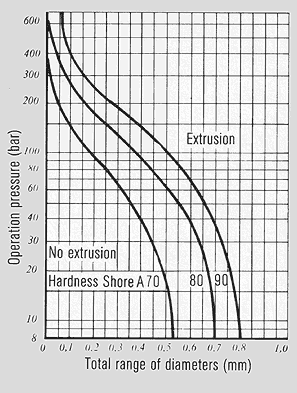| Extrusion | ||
Extrusion (of O-rings).
When pressurized, O-rings behave as incompressible liquids: the O-ring in the installed
state is mechanically deformed; with rising pressure it is subjected first to further
elastic deformation and then to plastic deformation, filling the cavities existing on the
side facing away from the pressure. With a further increase of pressure the deformation
becomes so great that the O-ring finally penetrates even into narrow gaps and is
destroyed. This extrusion (gap penetration) does not only destroy the O-ring, however, but
also reduces the mobility of the seal face to such an
extent that it is no longer able to follow the shaft movements to the degree necessary.
The result is an increase of leakage. All other forms of secondary seals for mechanical seals made of elastomers and non-elastomers
(e.g. PTFE) tend to behave in the same way as an
O-ring. Only the pressures needed for the extrusion differ. It is also known that the
pressure necessary for the extrusion is primarily a function of gap size and material
hardness. Further parameters are the material itself, the temperature, the number of
pressure cycles and the possible additional chemical load on the material. If the
operating conditions are known, extrusion damage can be prevented by selecting suitable
materials of commensurate hardness and, if necessary, by using a support ring with lock. |
 Deformation of an O-ring under a mounting pressure  Diagram for the design of O-ring seals |
|